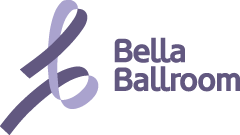First Dance Choreography in Orange County, CA
Choreography:
Today I want to write about choreography and first dance choreography! A choreographed routine means every step and movement is planned ahead of time. The dancers pick the music, and they know what they are supposed to do for every part of the music. The great part about routines is that it takes the guesswork out! Partners know what is supposed to happen next, so it’s easier to pull off those impressive lifts and tricks.
Gary McIntyre and Susan Kirklin are renowned ballroom and swing dancers. Their routine to The Beatle’s “I Want to Hold Your Hand” is lovely in its humor and grace. They tell a story of first telling someone how you feel and explore through their dance that feeling of wanting to hold someone’s hand. They pair their movements with the lyrics, playing their dance off the words.
The Junior Shag Dance Team has all junior (under 18) dancers. These young adults pull off a fun and complex dance routine. The seamless performance has every couple in sync with each other. Watching this, I notice how the routine isn’t overly flashy or full of tricks. It is full of just amazing dancing with well executed choreography and an awareness of their teammates. They show control of their movements.
Behind every choreographed dance is the knowledge of connection and basics! The routines seen have dancers who are connected to their partner. They’ve spent hours practicing, perfecting their craft and their dance connection. Not only do they each know the moves of the routine; they also know how to “feel” what the other is doing through that dance connection.
Not every dance is choreographed. Granted, Maxime and Torri have each danced for years and with each other professionally. Nonetheless, they dance to Sinatra’s “Nice n’ Easy” so effortlessly. You can see them play off of each other. This is a great example of a true lead/follow connection. They can feel in each other’s bodies what the other person is about to do, even though nothing was planned ahead of time.
Here is an improvised waltz, so nothing was choreographed. Brook and Rachel’s movements are fluid and beautiful. To dance like this without planning ahead, they read each others’ movement through their connection.
It is so inspirational to watch these dancers. When you have a great connection with your partner, it makes choreography that much easier. You can have an amazing dance whether it is planned and choreographed or based off of knowing a few fun moves!
Connecting to Your Dance Partner
In any kind of partner dance, connection to your partner is so important! It’s how you “talk” to each other. But, when talking about dance connection, I realize not everyone knows exactly what that means. In the studio we talk about avoiding “spaghetti noodle arms” where one or both people keep their arms loose and let them hang. That’s part of it. We also want to avoid one person putting more of their weight into the other. Connection is about letting each other feel the weight of your bodies while still supporting yourself. The lead’s hand on the back should feel sturdy for the follow. When we take our hand hold, there should be a slight pressure from both dancers, with neither dancer overpowering the other. All of this is part of the journey to communication in dancing. Of course, routines are fun to perform and watch. However there is something magical in seeing two dancers who may never have danced with each other before connect with each other and have an amazing dance that looks like it was all choreographed.
In every dance, there is what we call connection. It is the ability to have an effect on your partner based on your own movements. When you dance, you should be able to feel where your partner is going to go before they do it. This is where the lead/follow quality of partner dancing comes through! A hint of resistance to hold your own dance frame is key. Partner dancers learn over time how to adapt to different levels of resistance with various dancers.

